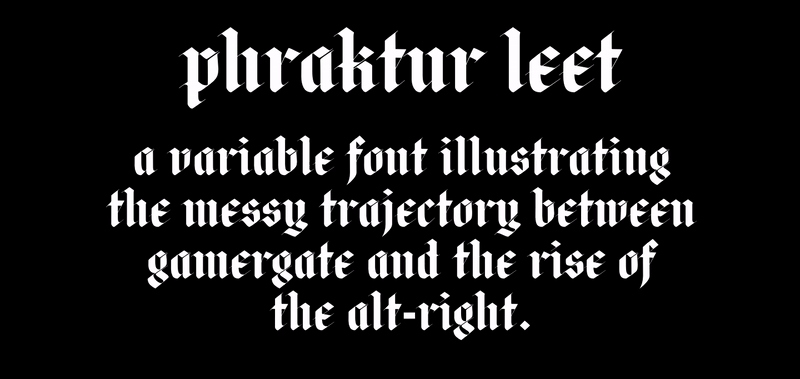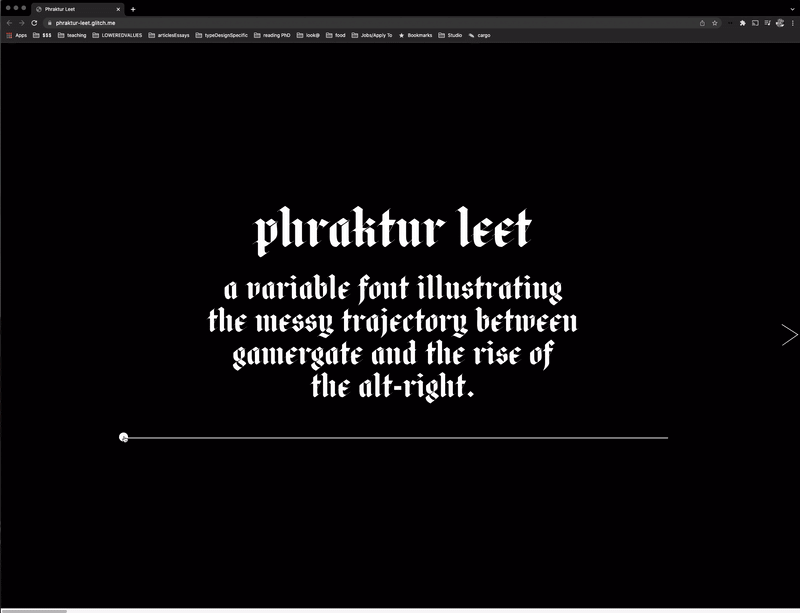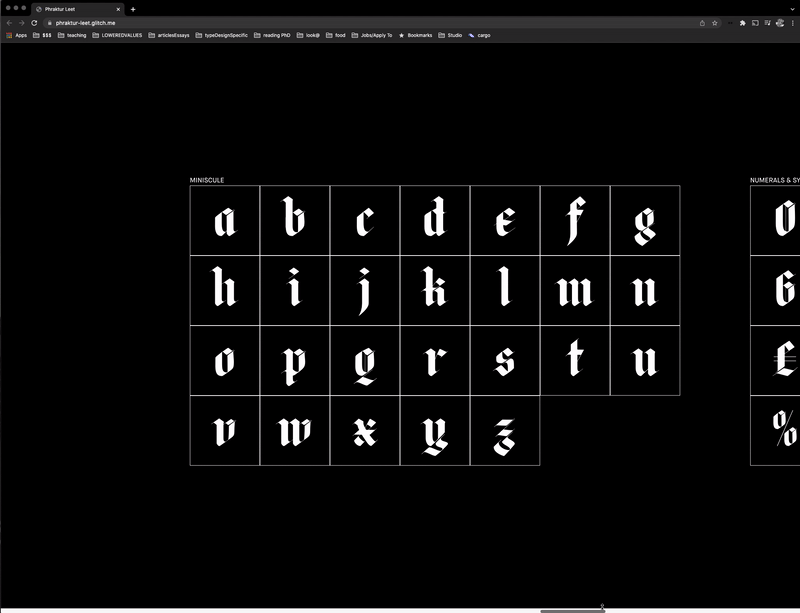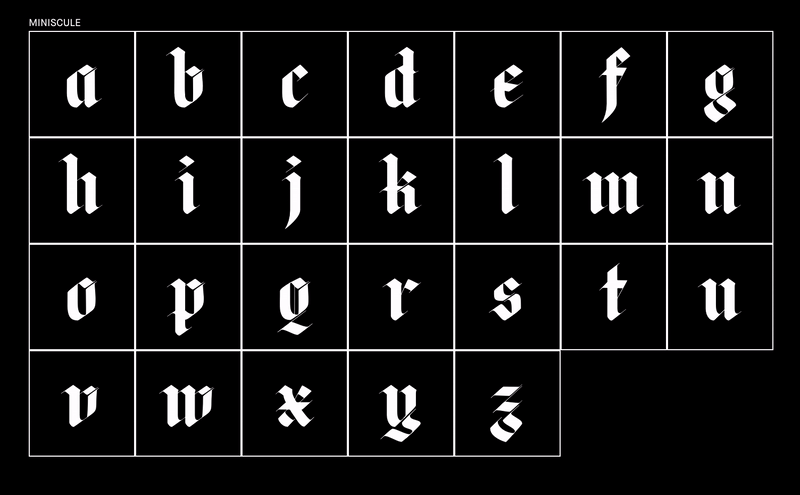
For the final project in GE1 (Grand Prix), Kit created a complex variable font which illustrates the messy trajectory between gamergate and the rise of the alt-right. After tackling serious challenges to drafting complex shape-shifting forms which could interpolate, they created a website specimen with information on the forms significance which concludes with a type-tester (scroll horizontally).
Final website is viewable : here.
Final website is viewable : here.
From Kit:
“Phraktur 1337 as a variable font is a visual metaphor that structurally connects gamer culture and white nationalism. At its base, it’s a Fraktur, referring to the use of Fraktur by the Alt-Right, especially in Germany where it hearkens back to Nazi Aryan nationalism. The interpolation axis—instead of increasing weight or width—turns the Latin into Leet and back. Leet is a system of modified spellings that uses orthography as gatekeeping, substituting letters with homoglyphs constructed using numbers, punctuation, and other letters to visually represent them. Leet originated in 1980s hacker bulletin board systems, where it first served a cryptographic function by making it difficult to text-search for indicators of illegal practices. Leet was soon adopted by the gaming community, where its base vocabulary and grammar expanded to include things like ‘pwned’ for trash talk, like ‘we pwned the other team,’ or ‘n00b,’ used to disparage newbies.
“Phraktur 1337 as a variable font is a visual metaphor that structurally connects gamer culture and white nationalism. At its base, it’s a Fraktur, referring to the use of Fraktur by the Alt-Right, especially in Germany where it hearkens back to Nazi Aryan nationalism. The interpolation axis—instead of increasing weight or width—turns the Latin into Leet and back. Leet is a system of modified spellings that uses orthography as gatekeeping, substituting letters with homoglyphs constructed using numbers, punctuation, and other letters to visually represent them. Leet originated in 1980s hacker bulletin board systems, where it first served a cryptographic function by making it difficult to text-search for indicators of illegal practices. Leet was soon adopted by the gaming community, where its base vocabulary and grammar expanded to include things like ‘pwned’ for trash talk, like ‘we pwned the other team,’ or ‘n00b,’ used to disparage newbies.
As a visual metaphor, Phraktur Leet’s interpolation is (intentionally) messy and fragmented before coalescing into a whole on either end. The fragmentation that happens in between illustrates how the mainstream public couldn’t draw a line between gamer culture and white nationalism, possibly because of the way their harassment campaigns were coordinated across fragmented and decentralized channels. And even when the typeface is “clean” on either end of the interpolation, the Latin is a super display that works poorly at smaller sizes, and leet orthography is intentionally difficult to read, reflecting the illegibility of online gamer and alt-right spaces to the general public.”


